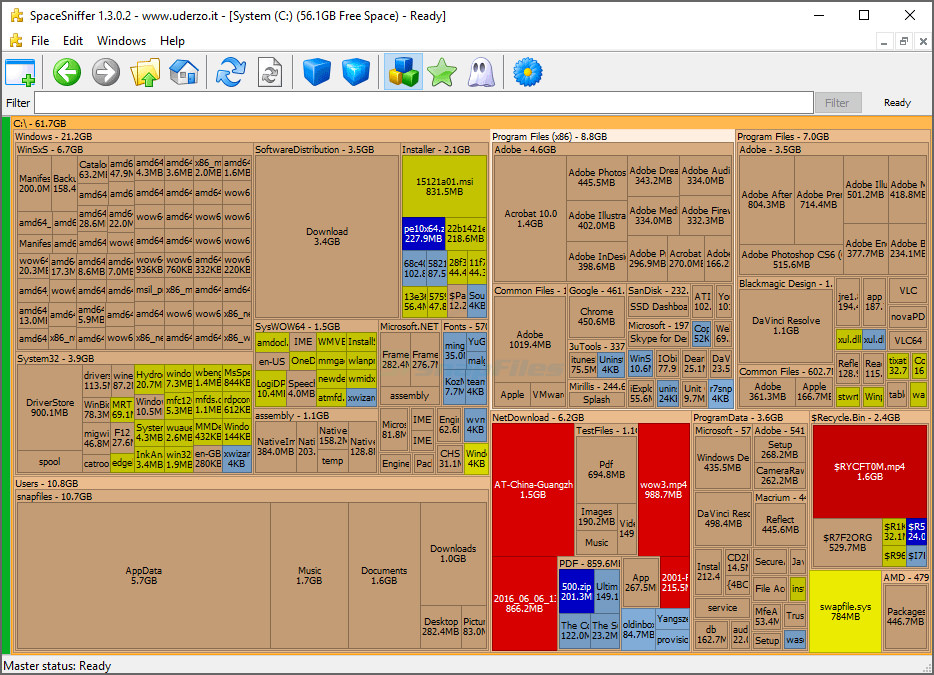

You can either search for a particular folder or scan the selected disk, and WinDirStat will show a graphical interface of the results. The tool is free but comes strapped with power-packed features.įirst up, the tool scans your computer or any external drive from top to bottom. WinDirStat or Windows Directory Statistics is a disk space analyzer tool that works flawlessly on Windows PC.

There are hundreds of such tools available, and here are the best disk space analyzer tools for Windows 10 PC. You can exactly see which file/folder takes the most space and take necessary actions to free it up. Disk space analyzer tools on Windows lets you analyze the storage. First, in Options | Scanning, users can elect to disable the assignment of backup/restore privileges to FolderSizes, which will usually fix the problem at its source. The same option screen also allows users to explicitly set the allocated size of offline files according to some predefined value (a single cluster, 4Kb, 8Kb, or 16Kb), which can be used to work around the problem.įinally, it might be worth noting that FolderSizes will never trigger the retrieval of offline files during the course of any analysis or reporting process (generally a process must read from or write to an offline file in order to trigger a recall).When you clog up your hard drive with too much data, your PC will eventually start to slow down. This can be a problem for FolderSizes, since we want to know actual disk space usage for files on the storage device (not their offline file sizes).įolderSizes offers a couple potential workarounds for this problem. However, occasionally we’ve run across HSM appliances that report the size of stub files in terms of their original values (before the file was moved offline) when queried by an application with backup/restore privileges assigned, assumedly because this would be the size occupied by a backup.

It does this in order to decrease the likelihood of permissions issues, thereby improving visibility into the target file system. In order to understand this scenario, it’s important to know that (by default) FolderSizes assigns itself backup and restore privileges whenever possible. However, we have seen rare instances where the size of offline stub files was reported incorrectly. So how does FolderSizes report on such files? Typically an offline stub file will occupy a single cluster on the file system – and that’s exactly what FolderSizes (correctly) reports in the vast majority of cases. In such cases, the original file is replaced with a small “stub” file that resolves to the new location. Windows Server and some third-party hierarchical storage management (HSM) systems provide offline file management capabilities, allowing policies to be established which cause old or infrequently used files to be moved to cheaper and slower storage systems.


 0 kommentar(er)
0 kommentar(er)
